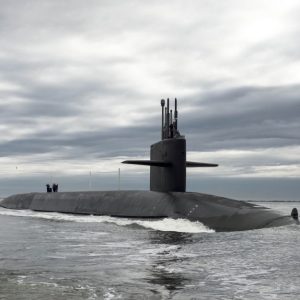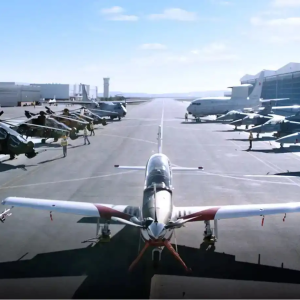Restructure U.S. Forces for Multi-Front War
Washington faces a strategic reality it can no longer defer: multi-front war restructuring is now a prerequisite for credible deterrence. Moreover, Russia’s aggression in Europe, Iran’s recent provocations in the Middle East, and the pacing challenge from China have outgrown legacy force-sizing concepts. As Arnold L. Punaro argues in his recent RealClearDefense essay, the United States must rework both force structure and budgets to deter, surge, and win across overlapping theaters—without undermining readiness or the resilience of the industrial base [1].
Key Facts
• The core requirement is multi-front war restructuring—a return to a two-theater mindset adapted for modern multi-domain operations.
• Priorities: bigger Pacific Navy, more capable Army in Europe, longer-range Air Force with robust strategic airlift, and a Marine Corps ready as a combined-arms maneuver force [1].
• Enablement: cut overhead; accelerate emerging tech; rebuild munitions, sealift/airlift, and depot capacity; modernize command-and-control and logistics [2][3].
• Strategy alignment: the 2022 National Defense Strategy frames China as the pacing challenge while accounting for Russia as an acute threat [2][4].

For three decades, U.S. strategy oscillated between a “two-major-war” sizing yardstick and a leaner “1+” construct—defeat one great-power aggressor while deterring another. Neither fully captures the concurrency today. Multi-front war restructuring refocuses on simultaneous campaigning across theaters, where air/maritime access, electromagnetic dominance, and long-range fires determine initiative [3][5]. In practice, that means fielding formations optimized for anti-access/area-denial environments while keeping capacity to sustain prolonged attrition in Europe.
While the National Defense Strategy’s prioritization of the Indo-Pacific remains sound, but the Army and Air Force cannot be “economy of force” in Europe if Russia’s threat accelerates [2]. Conversely, over-investing in one theater invites opportunism in another. Consequently, the answer is a posture that couples theater-specific asymmetries with inter-theater mobility—prepositioned stocks, munitions depth, and lift that make deterrence believable.
A practical blueprint by service
Navy: mass, survivability, and weapons depth for the Pacific
In the Indo-Pacific, deterrence depends on naval mass and magazine depth. Multi-front war restructuring therefore prioritizes: (1) submarine availability and torpedo reloads; (2) surface combatant survivability via layered air/missile defense; (3) distributed lethality through unmanned surface/undersea vehicles; and (4) reload-at-sea concepts to sustain fires. Additionally, the plan should lock a 30-year procurement profile to stabilize shipyards, while war-reserving steel, castings, and solid-rocket motor inputs.
Army: heavy/medium mix, air defense, and rapid theater opening in Europe
In Europe, capacity—not just capability—deters. Additionally, the Army component of multi-front war restructuring restores layered air and missile defense, grows engineer bridging and breaching units, and fields long-range fires at echelon. It also invests in theater opening: ports, rail, and inland distribution under threat. Prepositioned equipment sets must include spares and precision munitions kits, not simply hulls.
Air Force: range, airlift, and munitions integration
In air campaigns, range is the coin of the realm. The Air Force’s share of multi-front war restructuring expands stand-off/stand-in combinations, accelerates collaborative combat aircraft, and protects airlift to move people and precision-guided munitions at scale. Therefore, to avoid a brittle sortie model, the U.S. requires hardened, dispersed operating locations, agile combat employment, and rapid runway repair as core readiness metrics, not niche skills [4].
Marine Corps: combined-arms flexibility for contested littorals
Crucially, the Corps should retain its expeditionary combined-arms character while enabling sea denial with mobile anti-ship fires, counter-UAS, and expeditionary refueling. Under multi-front war restructuring, Marine littoral regiments plug gaps for the joint force: sensing, survivable magazines, and kill-chain continuity in contested archipelagos.
Budget realism: cut overhead, not combat power
Punaro’s thesis is blunt: we spend more for less force [1]. First, the fix starts with overhead. A tiered “protect, scrutinize, divest” framework aligns with auditability and redirects savings to war-fighting accounts. In parallel, procurement must emphasize repeatable designs and lot-over-lot learning to lower unit costs, while multi-year contracts secure supplier capacity for critical missiles and energetics. Congressional budget scorekeeping should recognize that munitions inventory value is a strategic hedge, not an expense to be minimized [3][7].
Equally important, industrial mobilization must be treated as an operational plan. Accordingly, multi-front war restructuring means mapping bottlenecks (chargers, castings, micro-electronics, energetics), building dual-use buffers, and pre-funding government-owned tooling where private ROI is too thin. Therefore, depot capacity for battle-damage repair and propulsion overhauls should be expanded ahead of need—because in a two-theater crisis, timelines collapse.
Technical insight: The force we can mobilize in weeks is the only force we can truly count on. Airlift/sealift, war reserve stocks, and dispersed basing are the quiet determinants of victory.Defence Agenda analysis
Command, control, and logistics as force multipliers
Moreover, command and control must be resilient and coalition-native. The joint force needs a single kill-web that fuses space, cyber, EW, and fires across combatant commands. In addition, a modern “throughput first” approach—pre-cleared corridors, autonomous convoys, contested-environment refueling—turns distance into a solvable problem. These are not adjuncts; they are the backbone of multi-front war restructuring.
Risks if we delay—and how to sequence action
If Washington delays, adversaries can force the U.S. into reactive, sequential campaigns. To mitigate these risks, the remedy is a three-year sequence: Year 1—overhead cuts, munitions surge, and mobility buys; Year 2—shipyard/sub overhaul slots, airbase hardening, air defense layers; Year 3—distributed maritime and expeditionary concepts at scale. Throughout, the Services should stress-test plans against a two-theater war game with realistic attrition and replenishment rates [2][6].
Bottom line: multi-front war restructuring is not a slogan. It is a tight coupling of strategy, budgets, industrial base, and allied integration. Done right, it restores deterrence; done late, it raises costs and risks.
Internal link
For broader context on technology and force design trends, see our strategic overview: Defence & Aerospace Strategic Trends.
References
[1] Arnold L. Punaro, “Restructuring Our Military for a Multi-Front War,” RealClearDefense (Aug. 25, 2025). Link
[2] U.S. Department of Defense, 2022 National Defense Strategy (NDS)—unclassified version. PDF
[3] Congressional Budget Office (CBO), Long-Term Implications of the 2025 Future Years Defense Program. Report
[4] U.S. DoD Comptroller, FY2025 Budget Request Overview—strategy alignment. PDF
[5] CRS, Defense Primer: Geography, Strategy, and U.S. Force Design (IF10485). PDF
[6] CSIS, Force Structure in the National Defense Strategy, analysis of “1+” vs. two-war construct. Brief
[7] House Appropriations Report (FY2024), discussion of collaborative combat aircraft and procurement scaling. Link
Further Reading
• Punaro, The Ever-Shrinking Fighting Force (excerpt) • CSIS: U.S. Military Forces—Strategy & Budget Context
Editor’s note on visuals: In line with our policy, the featured image above must come from the provided news link. Replace the placeholder src with the original image URL from the RealClearDefense article.











